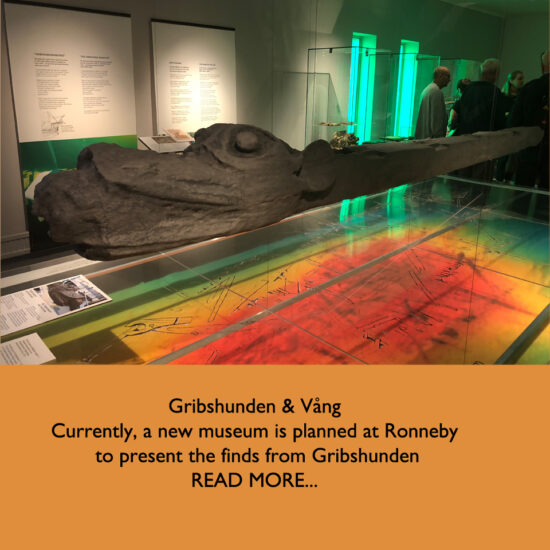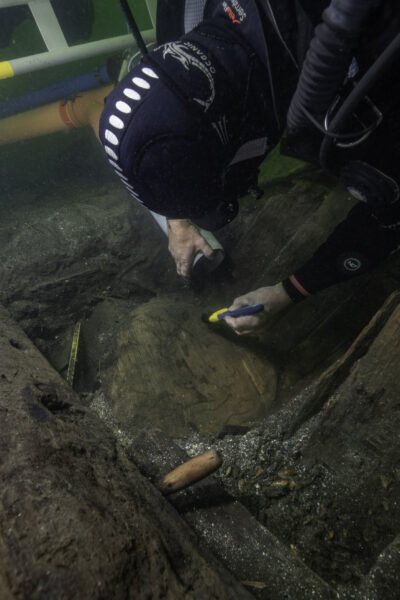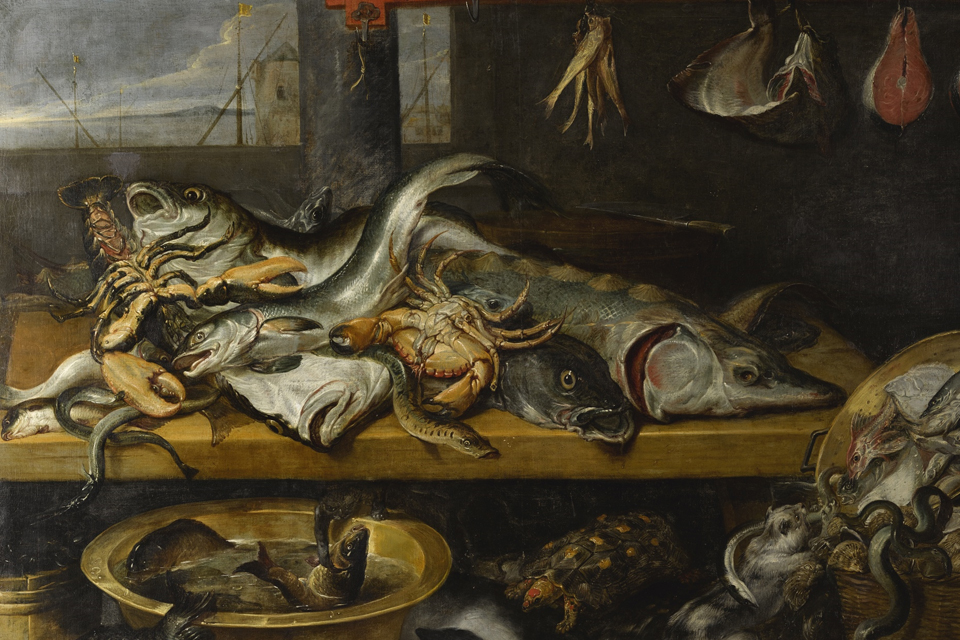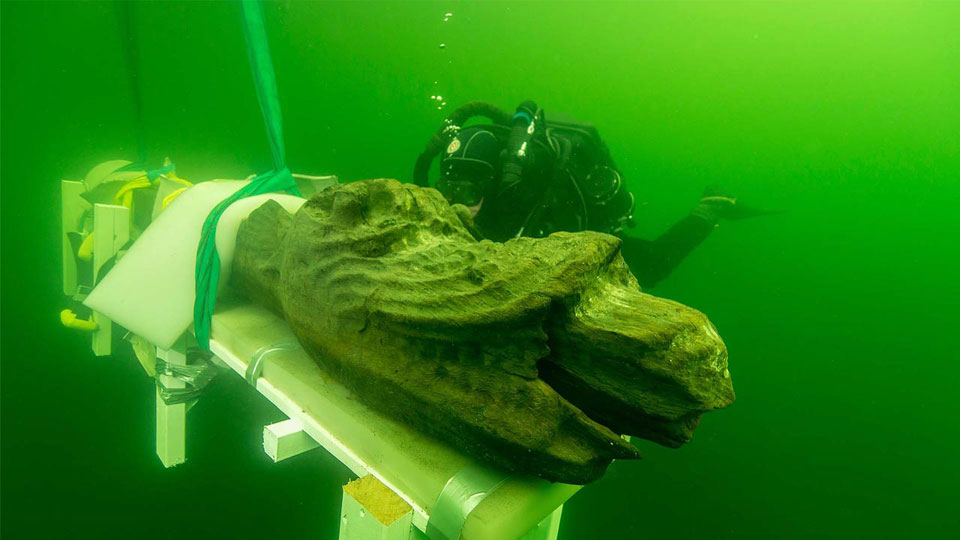Today, the Atlantic sturgeon is a rare species. Not so, in the Middle Ages. Recently, archaeologists from Lund University succeeded in identifying a massive specimen in the womb of a capsized royal ship off the Baltic coast near Ronneby in South-eastern Sweden.
 In 1495, King John of Denmark (AD1481-1513) set sail for Kalmar to enter negotiations with the leader of the Swedish faction in the Scandinavian union of the three kingdoms, Denmark, Norway, and Sweden. Likely, the king sailed on his flagship, “The Griffin” (Griffone), also called the “Gribshund“ (or Griffin-Hound). On his way, the navy – at this time numbering 12 large ships – anchored up near Ronneby in Blekinge, where the king luckily went ashore. Soon after, the ship caught fire and sank, causing the death of and drowning of more than 150 sailors and soldiers.
In 1495, King John of Denmark (AD1481-1513) set sail for Kalmar to enter negotiations with the leader of the Swedish faction in the Scandinavian union of the three kingdoms, Denmark, Norway, and Sweden. Likely, the king sailed on his flagship, “The Griffin” (Griffone), also called the “Gribshund“ (or Griffin-Hound). On his way, the navy – at this time numbering 12 large ships – anchored up near Ronneby in Blekinge, where the king luckily went ashore. Soon after, the ship caught fire and sank, causing the death of and drowning of more than 150 sailors and soldiers.
In the 1970s, a group of amateur divers located the wreck on the depth of ten metres. However, the wreck was not identified as the Griffin until the year 2000. Since then, archaeologists have worked to excavate and preserve the wreck.
Due to the brackish water in the Baltic, the wreck is believed to be one of the best-preserved caravels from that period. The ship is carvel-built and measures 35 metres with a beam of 7.5 metres. She was rigged with three masts. The size of the ship is comparable to that of the “Mary Rose”, the carrack-type ship discovered at Portsmouth in 1971.
Just as was the case with Mary Rose, the Griffin has yielded numerous artefacts illuminating the life onboard a prestigious royal vessel ca. 1500, such as a chain mail, crossbows, bones, barrels, glasses and capstans. New finds from 2019 are a crossbow, a crossbow bolt and an arquebus, an early handgun. The wreck was loaded with iron-cannons and sported a mighty figurehead, weighing about 250 kilos and featuring a ferocious mythical beast, a dragon-like sea monster shown to devour a person in its wile mouth.
Another Fish Monster

As the king’s flagship, the Griffin is believed to carry the paraphernalia of the Royal Household – not least victuals and textiles. So far, the excavations have not revealed the chest of the king. One spectacular find, however, was recently revealed: a barrel of a salted Atlantic sturgeon of immense proportions. At first, the archaeologists believed the sturgeon to be of the European type. This type, however, died out during the Little Ice Age and was gradually supplanted by its Atlantic cousin.
The identification of the particular species was made possible through DNA-analysis. A survey of other medieval “sturgeon-finds” have revealed their presence in monastic, urban or aristocratic contexts indicating the sturgeon was a luxurious delicatessen. Danish law t this time stipulated that any sturgeon was by definition the property of the king, a royal marine prerogative.
This particular sturgeon measured two metres and may have been 40 to 50 years old at the time of the catch. The archaeologists found that the fish had only been butchered into large pieces and not filleted. Was it lucky catch, hastily preserved onboard the ship? Probably not. The archaeologists found bits of goat-bones in the barrel, indicating someone at some point had tried to keep the fish alive in order for it to be served fresh. However, a basin of such size may have presented too many challenges.
Likely, the sturgeon was intended to be served at a banquet at Kalmar as an attempt to seduce the Swedish nobles. We may presume it would have been served as a “whole” fish on a great plank or platter, and not cut up and served in a soup.
SOURCE:
Fish in a barrel: Atlantic sturgeon (Acipenser oxyrinchus) from the Baltic Sea wreck of the royal Danish flagship Gribshunden (1495)
By Stella Macheridis, Maria C.Hansson, and Brendan P.Foley.
In Journal of Archaeological Science (2020) Vol 3 (OA)
Figureheads and Symbolism Between the Medieval and the Modern: the ship Griffin or Gribshunden, one of the last Sea Serpents.
By Niklas Eriksson
In: The Mariner’s Mirror (2020), Vol 106, No 3, pp 262-176
READ MORE:
Gribshunden: Significance and Preliminary Investigations. By Rolf Warming. 01.07.2015
Gribshunden Shipwreck: A short report from the 2019 excavation
SEE MORE:

